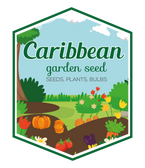
Carolina Reaper , (LIVE PEPPER PLANT) World's Hottest
FAST & FREE SHIPPING
Over 90% of our orders are processed and ship out by next business day.
We are currently processing and shipping most orders within 1-3 business days. (backorders not included) Due to high demand during the peak months of January to May, orders may require additional time for packaging /shipment.
Free shipping for orders over $54.95. Excludes live plants, fresh products And Stackable Black Plastic Nursery Crate
Shipping and handling charges will cover outbound freight and packaging materials. Fees are applicable to all orders, based on total order value pre-tax. Expedited services can be selected at Checkout with extra fees.
- Free shipping to lower 48 states on orders $54.95+
- (Most Items), excluding live plants, plant bulbs, and black plastic nursery crate.
- Safe Seed Pledge
- Satisfaction Guaranteed
- Select your desired size and/or color from the available options.
Carolina Reaper Pepper,World's Hottest Pepper !
2 to 3 inches long by 1 to 1.5 inches wide; medium thick flesh; matures from green to red; pendant pods; green leaves; 30 to 36 inches tall; Extremely Late Season (120+ days); Here it is, 2013 Guinness Book record holder for the world's hottest pepper, averaging 1.569 million on the Scoville Scale!!
Hot peppers can be planted in garden beds or in containers. If growing hot peppers in pots, be sure there are adequate drainage holes in the bottom of the container and use a high quality potting mix. I like to add compost or aged manure to the potting mix when I’m filling my pots.
In a garden, find a spot with fertile, well-draining soil. I’m partial to raised beds, but they can also be grown in traditional in-ground gardens. Just be sure the soil drains well. I incorporate compost, worm castings, or aged manure into the soil prior to planting and add a handful of slow-release organic vegetable fertilizer to the planting hole. A soil pH range of 6.0 to 6.8 is ideal.
Space the plants two to three feet apart and insert some type of support as pepper plants can be prone to branch breakage, especially when the branches are heavy with fruits. I insert a tomato cage or a stake to provide support to the plant. If you live in a short season region, a sheet of plastic mulch can also be placed on the soil to trap heat, reduce competition from weeds, encourage quick growth, and a heavy yield. Even if you choose not to use a plastic mulch, you can pre-heat your garden soil in late spring by placing a plastic mulch on top of the soil for 10-14 days before planting.
Because our spring weather on the east coast can be unsettled, I erect as simple mini hoop tunnel over the plants for the first few weeks. The hoops are covered with polyethylene sheeting or a row cover to trap heat and create a microclimate for the heat-loving pepper plants. If you don’t make your own mini tunnels, you can also buy them online or at garden centres.
As summer arrives, water consistently, but keep in mind that hot peppers generally prefer drier soil conditions. Water when the soil is dry an inch or two down and be sure to water the soil, not the pepper plant. Wet foliage can spread disease. Fertilize hot peppers several times during the growing season with an all-purpose liquid organic vegetable or tomato fertilizer to give them a boost. Avoid high-nitrogen fertilizer which promotes foliage growth, but can reduce fruit production.
HOW TO GROW GUIDE
LET OUR CUSTOMER SPEAK FOR US

![[Seeds] - Caribbeangardenseed](http://caribbeangardenseed.com/cdn/shop/files/gift-card-gift-card-1_1024x1024_dfa857db-9150-4315-a362-7f0bb3fb9c47_60x28.png?v=1722895789)







